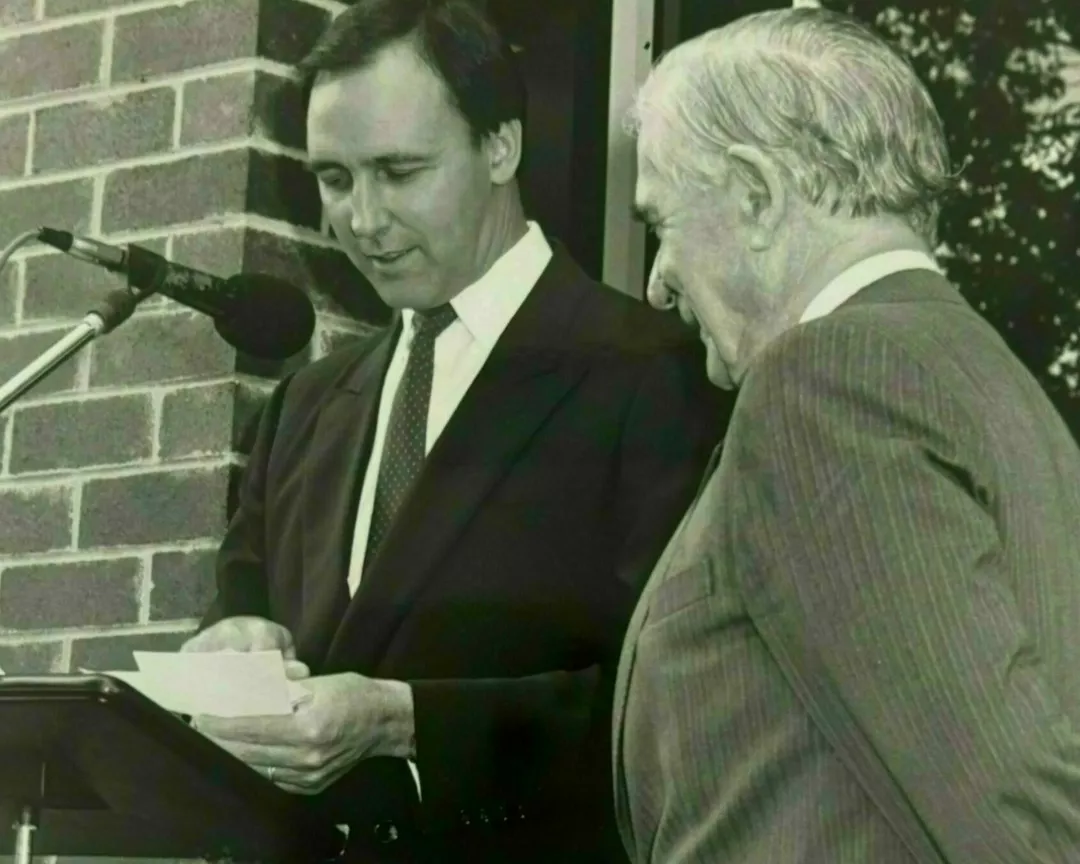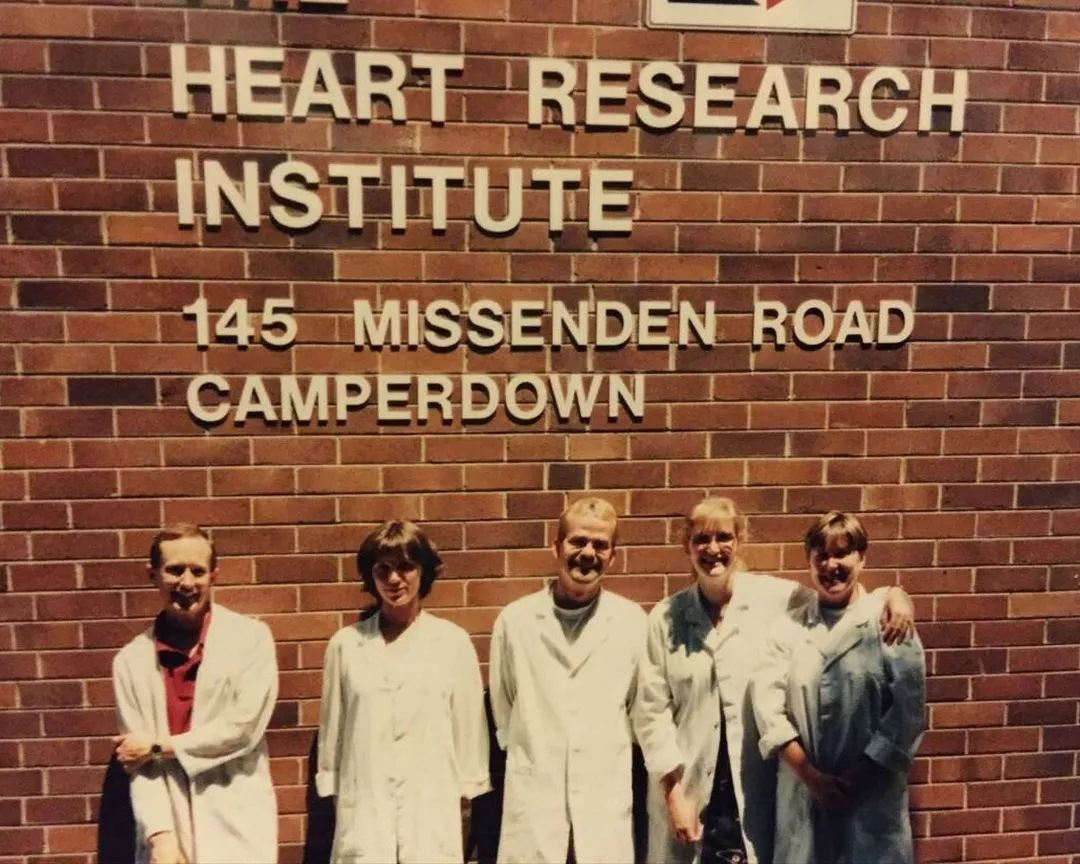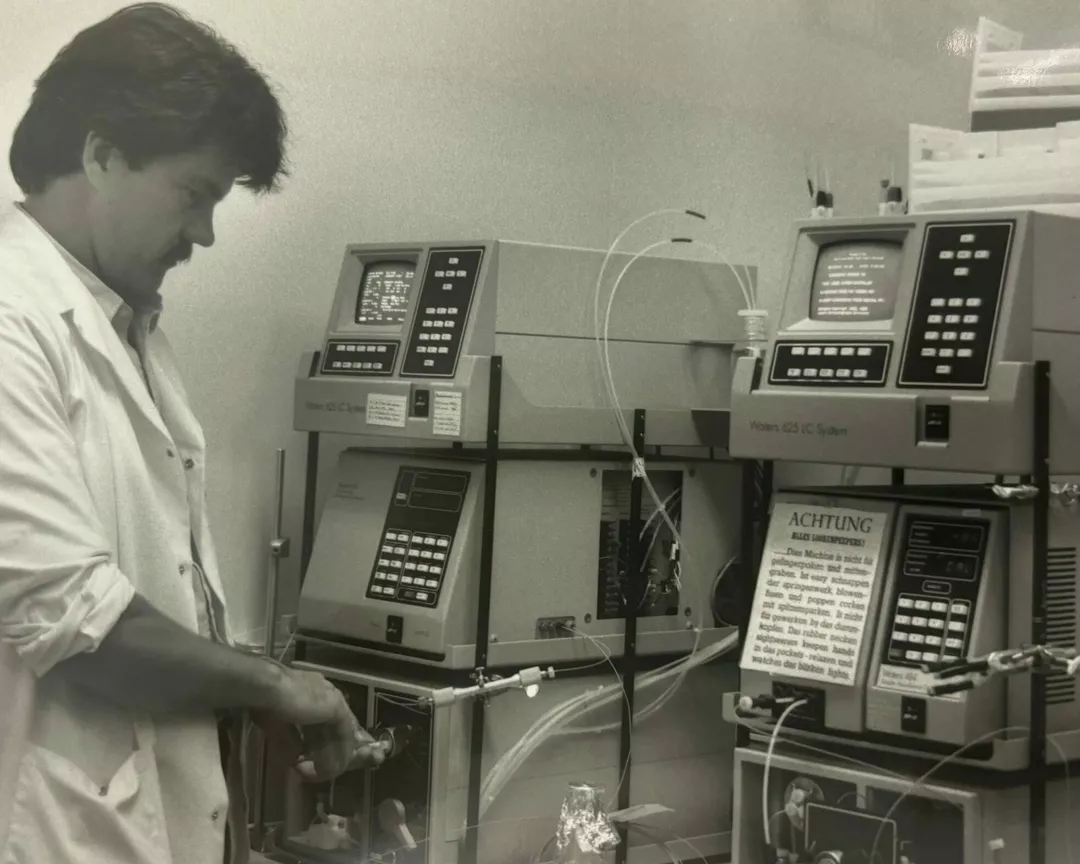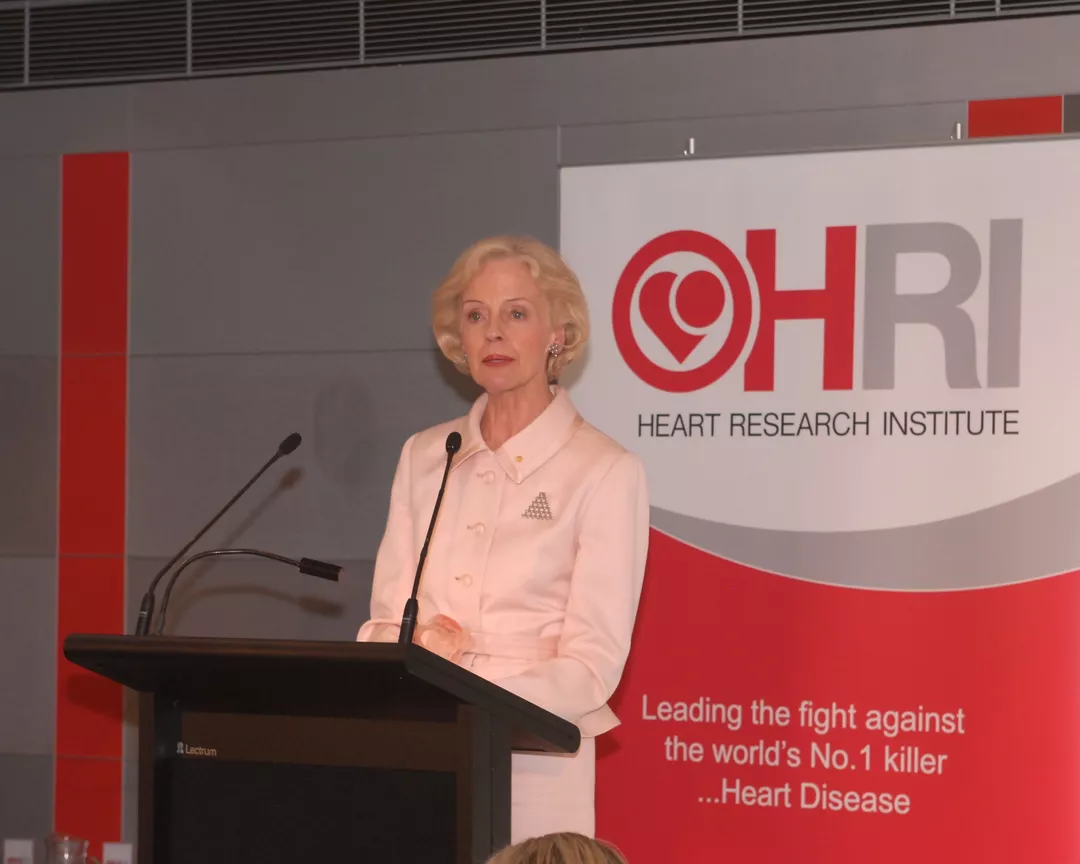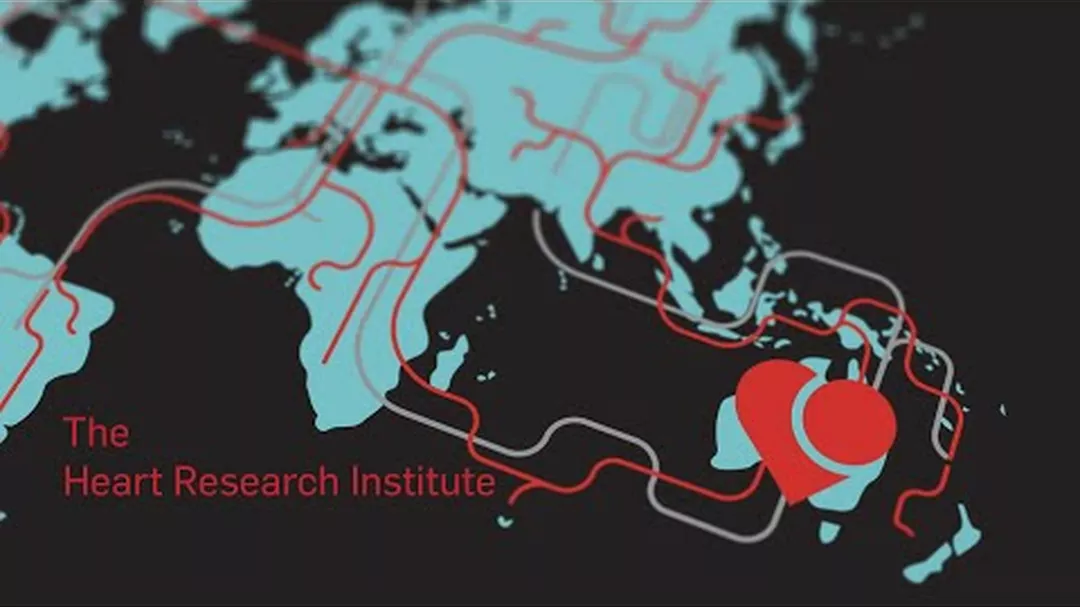The Heart Research Institute (HRI) is celebrating 35 years of world-renowned research.
HRI officially opened its doors on 17 March 1989, by then Treasurer the Hon Paul Keating.
It was the brainchild of a group of cardiologists at the Royal Prince Alfred (RPA) Hospital, including David Richmond and Phil Harris.
The original vision for HRI was to be Australia’s first medical research institute dedicated solely to the study of atherosclerosis. While a financially autonomous not-for-profit institute, it existed in the supportive environments of The University of Sydney and RPA.
The Institute’s model has allowed scientists to be inspired by the challenges encountered at the patient’s bedside, while also giving them access to the multidisciplinary capabilities of a major university.
Originally established in a small office on Missenden Rd in Camperdown with just 37 staff, by the year 2000 it had developed into a thriving unit comprising up to 70 researchers.
In 2009, HRI relocated to a state-of-the-art facility in the heart of Newtown, which also signified a significant milestone in the history of HRI and further expanded our capabilities.
Today HRI has more than 170 personnel working in 11 scientific groups and supported by a dedicated operations team, with almost 200 collaborations across 48 countries.
While the early research focus was on understanding the origins of atherosclerosis, our research capacity and focus has expanded to address the unmet need in a range of cardiovascular diseases – including stroke, peripheral artery disease, hypertension, congenital heart disease, preeclampsia, heart failure and vascular dementia.
More recently we have also welcomed the Djurali Centre, as we broaden our mission to achieve equity and help close the gap on Indigenous health and life expectancy.
HRI has made numerous discoveries that have contributed to an improved understanding of cardiovascular disease. It has also been a breeding ground for top scientific talent, with HRI alumni now holding positions of influence throughout the scientific and medical fields.
Some of our breakthroughs
2024 Wearable tech helping Aboriginal communities in fight against stroke risk
2023 World-first clinical trials begin for promising new anti-clotting stroke drug
World-first exercise study shows benefits for patients with congenital heart disease
Launched Fluxomics Centre, first in Australia devoted to cardiovascular disease (CVD), that could enable personalised medical treatment
2022 World-first research into bush tick saliva to develop anti blood clotting drugs
2021 World’s largest screening project for atrial fibrillation in over 70-year-olds and upwards launched in Australia
2017 Discovered a molecule that can predict who is most at risk of developing diabetes, 12 years in advance
The HRI team in 2019 outside the Eliza St facilities
2013 Uncovered the link between diabetes and CVD, a world-first and a discovery with the potential to save lives
2005 Demonstrated that low-birth weight babies have thicker aortic walls, possibly predisposing them to greater risk of CVD later in life
2003 Investigated the role high-density lipoproteins (HDL – good cholesterol) play in the protection against atherosclerosis
1999 Explored whether natural antioxidants such as vitamins E and C can actually prevent atherosclerosis, helping to elucidate the role of these vitamins
1998 Discovered that both protein and fat oxidation can have a major effect on heart disease and enter previously uncharted territory as we try to understand how protein oxidation can actually be prevented
1995 Proved the link between passive smoking and heart disease, research that became pivotal in the global move to ban smoking in public places
Our commitment
Today, at Eliza Street, Newtown facilities and the Charles Perkins Centre, The University of Sydney in Camperdown, HRI scientists remain dedicated to finding solutions to Australia’s – and the world’s – number one killer: cardiovascular disease.
While over the last 30 years there has been substantial progress in improving life expectancy and treatment outcomes, the job is far from complete.
“Cardiovascular disease is still the leading cause of death in Australia,” said Prof Andrew Coats, HRI’s CEO and Scientific Director.
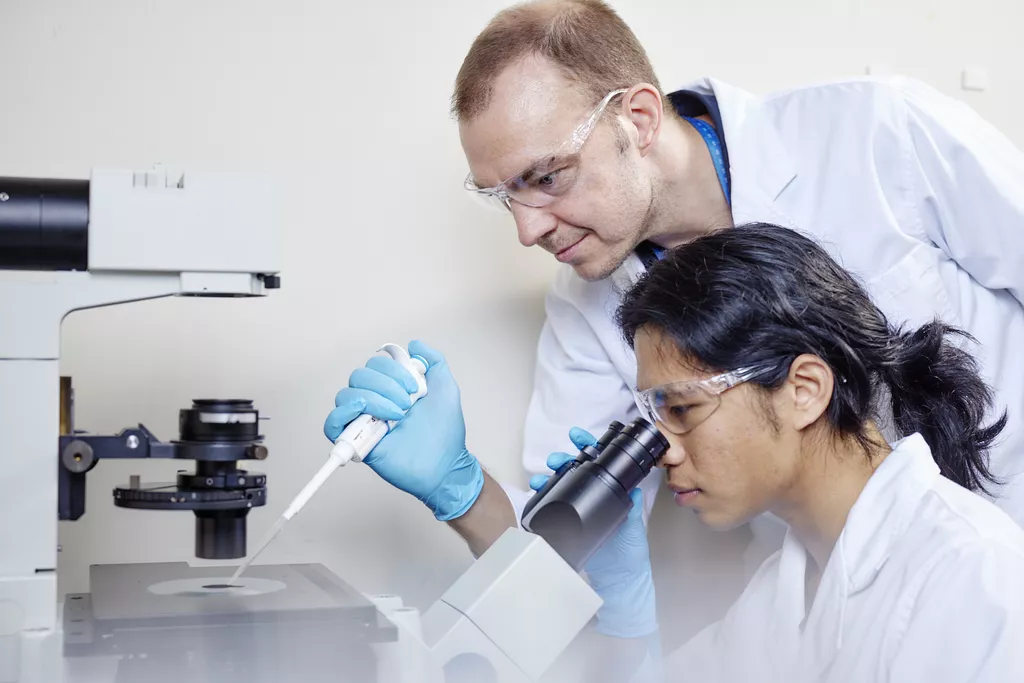
We stand for supporting, enhancing and promoting Indigenous health. We also have a very strong commitment to building up women in STEMM, and to being a nurturing place that looks after young scientists and researchers.
“As we expand and look to the future, HRI continues to nurture the brightest minds. We will constantly emphasise support for youth, support for women in STEMM and support doing our absolute best to ensure the Indigenous communities of Australia do not feel left behind.”
We honour our values of excellence, curiosity, teamwork, transparency and inclusivity. We are one team with a united goal.
We remain indebted to our generous donors who support our groundbreaking work and innovation, and we thank all the researchers and staff who have helped build HRI into the world-leading Institute that it is today.


